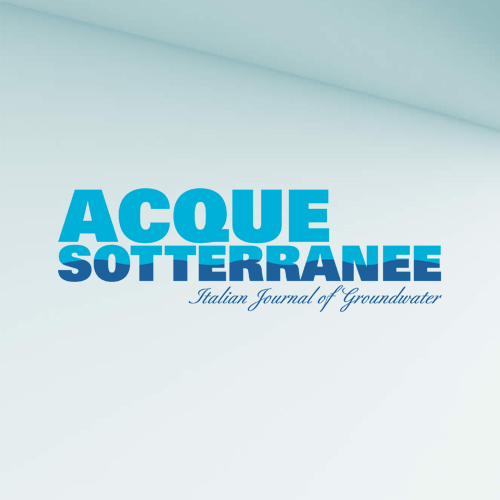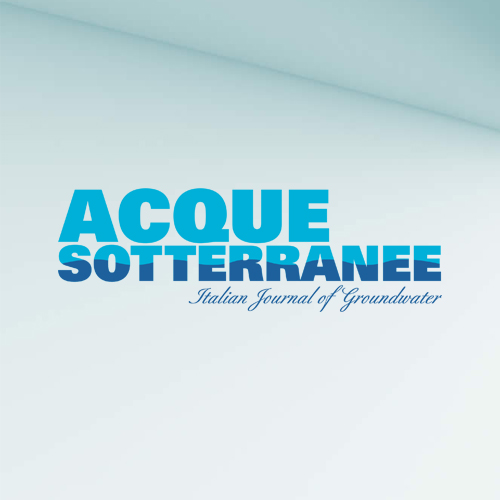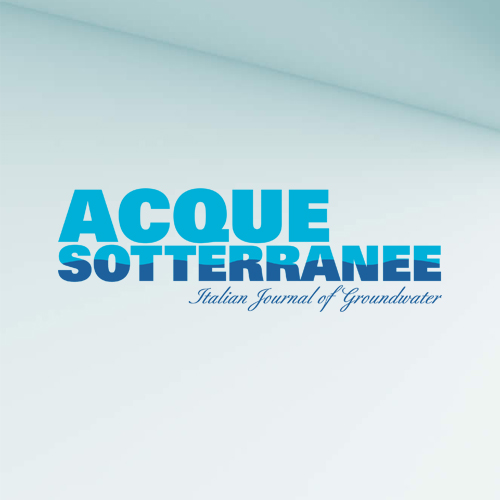Spatio-temporal variability of groundwater hydrochemical features in different hydrogeological settings in Piedmont and Campania regions (Italy), a comparative study
Accepted: 19 March 2024
SUPPLEMENTARY MATERIALS: 106
All claims expressed in this article are solely those of the authors and do not necessarily represent those of their affiliated organizations, or those of the publisher, the editors and the reviewers. Any product that may be evaluated in this article or claim that may be made by its manufacturer is not guaranteed or endorsed by the publisher.
Authors
The spatio-temporal evolution of groundwater chemistry has seen an increase in interest over the last decade at a global level. Identifying and discerning the sources of the natural and anthropogenic compounds and the actual hydrochemical processes, as well as their evolution, is essential to support a sustainable planning for managing and protecting groundwater resources at the present time and in the future. The main objective of this study is the comparison of two study areas in Italy (Piedmont and Campania Regions), different in their geographical and geological contexts and climate conditions, to highlight the similarities and differences in the hydrogeochemical behavior in space and time. Three main ions were considered (NO3 –, SO4 2–, Na+) and analyzed to identify the sources and hydrochemical processes responsible for their spatial distribution in the 2015-2020 period and evaluate the existence and the potential causes of trends in their concentration for the 2000-2020 period. Results highlight specific factors and processes distinguishing the spatial distribution and temporal variability of ion concentrations in Piedmont and Campania study areas. These processes are mainly related to the geological and geographical features of the study areas. In both areas, a significant influence of anthropogenic pressures emerges for both spatial and temporal evolutions, with remarkably increasing trends in NO3 – concentrations. In conclusion, some factors and processes emerge as site-specific, mainly related to the geological aspects and natural hydrochemical processes, whereas others are in common (i.e., anthropogenic impacts); thus, reinforcing the advantage of making comparative studies.
How to Cite

This work is licensed under a Creative Commons Attribution-NonCommercial 4.0 International License.
PAGEPress has chosen to apply the Creative Commons Attribution NonCommercial 4.0 International License (CC BY-NC 4.0) to all manuscripts to be published.
Similar Articles
- Enrique Fernandez-Escalante, José David Henao Casas, Rodrigo Calero Gil, Water quality aspects from Spanish sites to support managed aquifer recharge (MAR) guidelines not based on maximum allowable concentration standards , Acque Sotterranee - Italian Journal of Groundwater: Vol. 13 No. 1 (2024)
- Gioia Bravini, Matia Menichini, Marco Doveri, Numerical modelling in the coastal aquifer between Burlamacca Canal and Bufalina Ditch, southern Versilia (Tuscany, Italy) , Acque Sotterranee - Italian Journal of Groundwater: Vol. 4 No. 1 (2015)
- Alberto Tazioli, Stefano Palpacelli, Best tracer selection for hydrogeological investigations: preliminary results from laboratory test , Acque Sotterranee - Italian Journal of Groundwater: Vol. 2 No. 2 (2013)
- Piero Mori, James Baldock, Andrea Gigliuto, Mattia Cappelletti Zaffaroni, Cecilia Marino, Remediation of chlorinated solvents with Electrical Resistance Heating (ERH) at an active industrial site in Italy , Acque Sotterranee - Italian Journal of Groundwater: Vol. 12 No. 3 (2023)
- Giovanni Pietro Beretta, Stefania Stevenazzi, Specific yield of aquifer evaluation by means of a new experimental algorithm and its applications , Acque Sotterranee - Italian Journal of Groundwater: Vol. 7 No. 1 (2018)
- Davide Sartirana, Chiara Zanotti, Marco Rotiroti, Mariachiara Caschetto, Agnese Redaelli, Simone Bruno, Letizia Fumagalli, Mattia De Amicis, Tullia Bonomi, Urban Water Management in Milan Metropolitan Area, a review , Acque Sotterranee - Italian Journal of Groundwater: Vol. 13 No. 3 (2024)
- Matia Menichini, Simone Da Prato, Marco Doveri, Alessandro Ellero, Matteo Lelli, Giulio Masetti, Barbara Nisi, Brunella Raco, An integrated methodology to define Protection Zones for groundwaterbased drinking water sources: an example from the Tuscany Region, Italy , Acque Sotterranee - Italian Journal of Groundwater: Vol. 4 No. 1 (2015)
- Rudy Rossetto, Enrico Bonari, The future of Managed Aquifer Recharge in Italy: the European FPVII MARSOL Project and the European Innovation Partnership on Water Mar to Market , Acque Sotterranee - Italian Journal of Groundwater: Vol. 3 No. 3 (2014)
- Giovanni Pietro Beretta, Groundwater recharge through wells in open loop geothermal system: problems and solutions - part 1 , Acque Sotterranee - Italian Journal of Groundwater: Vol. 6 No. 2 (2017)
- Fabio Montagnani, Fausto Berti, Stefano Magini, Build quality of groundwater wells and contamination problems , Acque Sotterranee - Italian Journal of Groundwater: Vol. 2 No. 2 (2013)
<< < 11 12 13 14 15 16 17 18 19 20 > >>
You may also start an advanced similarity search for this article.


 https://doi.org/10.7343/as-2024-748
https://doi.org/10.7343/as-2024-748










